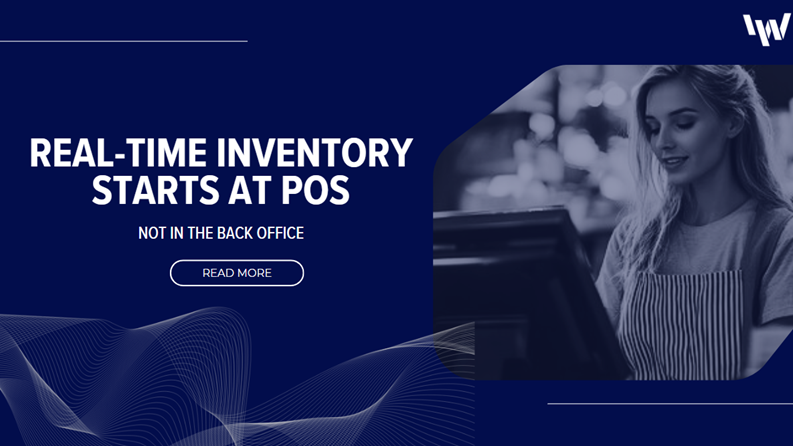How a POS System Can Improve Inventory Management for Retail Businesses
To begin with, inventory is the lifeblood of retail. Managing it well means fewer lost sales, reduced carrying costs, and more cash flow for growth. However mismanage it—and even the best product line can become a liability. With over 45 years of experience working across the retail spectrum from big-box chains to boutique outlets we’ve seen one truth hold steady: effective inventory management starts with the right POS hardware foundation.
Even though software gets the spotlight, it’s the hardware—scanners, terminals, printers, handhelds that ties it all together at the front lines. To that end, let’s take a practical, research-driven look at how POS hardware enables better inventory management, helping retailers gain real-time visibility, automate workflows, and scale with confidence.
Quick Summary: How POS Systems Improve Inventory Management
POS hardware improves inventory management in retail by enabling real-time tracking, automating reordering, supporting stock audits, and powering accurate forecasting—all directly from the sales floor.
Moreover in details, a POS system improves inventory management by:
-
First, by providing real-time stock tracking
-
Next, enabling automated reordering
-
Then, accelerating accurate stock audits
-
Also, syncing sales and inventory data
-
Finally, powering forecasting and planning
As a result, these benefits help reduce stockouts, enhance accuracy, and improve cash flow for retail businesses.
The State of Retail Inventory: High Stakes, Tight Margins
According to the National Retail Federation (NRF) persistent stockouts are costing nearly $1trillion worldwide annually due to stockouts escalating operational costs, fueled by inflation and economic uncertainty, which have made inventory management more unpredictable and challenging.
How Checkout Tools Help You Stay in Stock
As longtime advisors to retailers navigating operational complexity, we know that inventory visibility isn’t just about tracking it’s about anticipating. Here’s how retailers are leveraging POS hardware to take control of stock from shelf to supply chain:
1. Track Stock in Real Time Across Locations
For example, in a retail world where a single stockout can trigger a lost sale and a poor customer review, real-time visibility is non-negotiable. As a result, modern barcode scanners and integrated POS terminals ensure every sale, return, or internal transfer is captured instantly—across every channel and location.
Key Hardware:
• Barcode scanners
• POS terminals
• Mobile handhelds
2. Smarter Restock Signals and Automation
When the shelf gets low, systems should already be acting. Hardware plays a pivotal role by capturing the precise, real-world inventory movements that power automated reorder thresholds. Therefore, with cleaner data from the front line, systems can recommend POs that accurately reflect demand.
Key Hardware:
• Inventory auditing tablets
• Smart POS terminals
3. Smarter Stock Forecasts That Prevent Shortages
Additionally, manual audits can drain hours and introduce human error. For this reason, today’s retailers rely on mobile and RFID-enabled hardware to conduct rolling counts that are faster, less disruptive, and far more accurate unlocking new levels of operational efficiency.
Key Hardware:
• Wireless handheld scanners
• RFID readers
4. Link Front-of-House Sales with Back-End Supply
In reality, inventory doesn’t live in the backroom where your customers are. Consequently, leading retailers are closing the data gap between sales and stock by using POS hardware that feeds directly into real-time dashboards, enabling faster response to demand shifts.
Hardware that connects it:
• All-in-one POS terminals
• Digital shelf labels
5. Turn Sales Data Into Better Inventory Planning
In other words, forecasting starts with the fidelity of your inputs. In effect, hardware that reduces transaction lag, ensures scan integrity, and prevents stockroom discrepancies gives the head office the clean data it needs to forecast demand and allocate with precision.
Hardware that empowers it:
• Retail-hardened devices
• Label printers
Why Frontline Tech Is Key to Retail Accuracy
On the surface, POS software might tell you what’s wrong, but it’s the hardware that captures what’s real right at the shelf, counter, or stockroom. From capturing scan data to enabling mobile stock checks, in practice good hardware turns inventory management from a manual chore into a real-time system.
Over time, as retailers scale, these efficiencies compound—especially across multiple locations. Without reliable, integrated hardware at the core, inventory errors multiply, and customer trust erodes.
Closing Thoughts: Invest in Hardware, Unlock Inventory Intelligence
In reality, inventory challenges aren’t solved by spreadsheets or guesswork. They’re solved on the floor, in real time with durable, integrated POS systems that turn every transaction into a strategic data point.
Over time, at IW, we’ve spent more than four decades helping retailers build that foundation from handhelds and scanners to enterprise-grade POS terminals. Ultimately, the result? Smarter inventory decisions, better margins, and a checkout experience that customers—and staff—can trust.
Let’s Talk
P.S. Retail success isn’t about having more tech. It’s about having the right hardware in the right places. Above all, we’ll help you build a setup that works as hard as you do.

